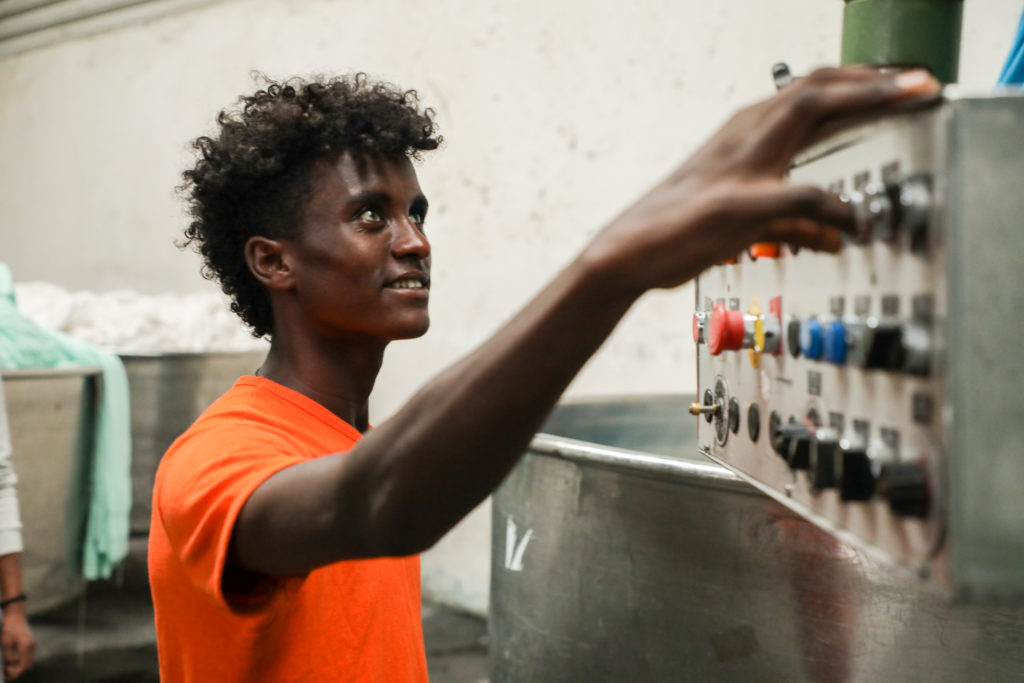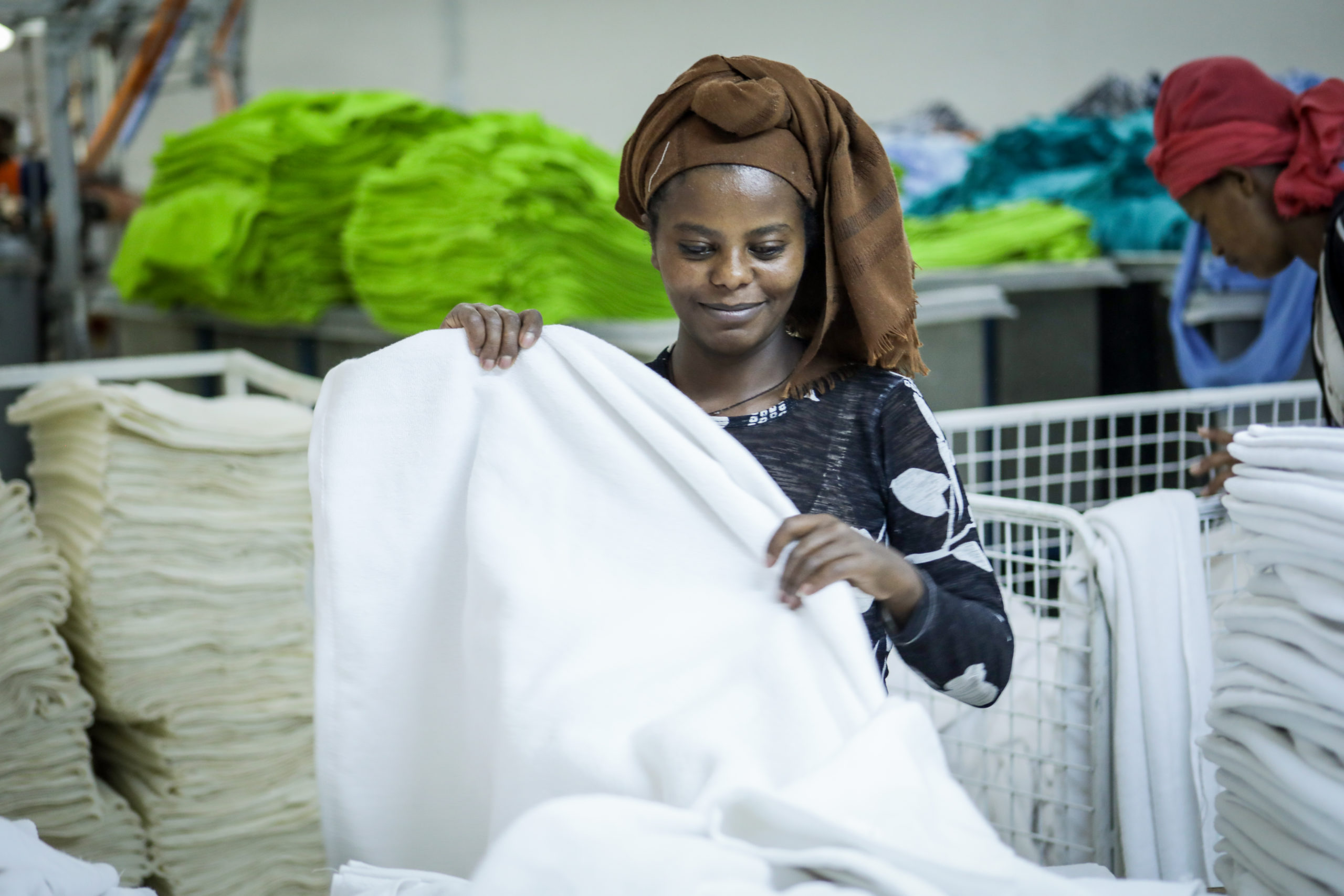The typical business model found within the textile and garment industry doesn’t provide a level playing field. With brands seeking to pay the lowest prices for suppliers to produce the best possible goods, unequal, short-term and purely transactional relationships are inevitable.
Brands get to dictate the contents of one-sided contracts and supplier codes of conduct while leaving responsibility for sustainability audits and force majeure to suppliers. The knock-on effect of this is felt by factory workers. This unfair distribution of power leads to low wages and poor working conditions.
Brands get to dictate the contents of one-sided contracts and supplier codes of conduct while leaving responsibility for sustainability audits and force majeure to suppliers.
At Solidaridad we’ve worked with numerous fashion brands to transform their purchasing practices, while helping manufacturers to improve their working conditions and reduce environmental impact. Through this experience, and our involvement in multi-stakeholder initiatives like the Sustainable Apparel Coalition (SAC), the Dutch Agreement on Sustainable Garments and Textile (AGT), and the Better Cotton Initiative (BCI), we know what it takes for brands to build equal partnerships with their suppliers. And it’s ultimately based on a willingness to change their mindset. It means focusing not only on profit-making but also on respecting workers’ rights throughout the supply chain – as human beings, and not unknown garment producers in unknown locations.
What do we mean by an equal partnership?
The Common Framework for Responsible Purchasing Practices (CFRPP) says about equal partnerships: “The purchasing company and their suppliers respect each other as equal business partners, engage in respectful sourcing dialogue, and pursue win-win situations, with a shared responsibility to improve working conditions.”
In practice, this means:
- building long-term, secure sourcing relationships
- reducing the churn of suppliers
- formulating agreements on mutual responsibilities for responsible purchasing
- only using force majeure clauses responsibly
- improving communication
- solving problems together and
- employing responsible exit strategies.
Read more on page 5 of the framework.

What’s stopping your brand from pursuing equal partnerships?
We understand that brands can struggle to get a foothold when it comes to cleaning up their supply chains. We understand even more about the struggles faced by factory workers who don’t even earn a living wage while creating garments for multi-million dollar European retailers. And it’s undeniable – there are deeply ingrained environmental and social problems within fashion supply chains. Many of these originate with the retailers and brands who hold the power over business relationships. The solution? You can start by championing equal partnerships with your suppliers.
You can start by championing equal partnerships with your suppliers.
Below I outline five common problems that brands face, and how you can rework your strategy to find balance in the partnerships with those who make your all-essential products.
Problem 1: Complex sourcing and buying processes spread across departments working in silos.
People don’t know who does what, and suppliers may have contact with multiple brand staff.
Solution:
Review and respond to the whole picture by mapping your company’s sustainability and purchasing practice issues alongside one another. By analyzing purchasing practices and sharing the findings you can create greater awareness within your company. This way different departments can pinpoint issues and approach suppliers accordingly.
Problem 2: Working through third-party agents means you don’t have direct contact with suppliers and their factory staff, and therefore cannot influence these partnerships.
You’re not the only brand to work through agents to select and manage suppliers. Suppliers often sub-contract when capacity is low. And so the partnership becomes ever-further from your grasp. So how can you regain responsibility for your brand’s relationships with these suppliers?
Solution:
Brands often make the assumption that it’s too difficult to get manufacturers’ information from their agents. But have you tried? It starts with a conversation. If you want to build equal relationships with your suppliers, you need to know who and where they are. This doesn’t mean you have to cut out intermediaries. You’re in the perfect position to:
- Insist that your agents are transparent about how and where your business is happening.
- Define what’s acceptable in terms of subcontracting to uphold equal partnerships with both direct suppliers, and third parties. This should be done in collaboration with your agent(s).
Problem 3: Profit-driven leadership means a lack of sustainable direction throughout your company.
If management is solely focused on making profit, it’s going to be difficult to negotiate better relationships with your suppliers. You’ll need support from the top to navigate these changes and to establish equal partnerships as a foundation for your purchasing practices.
Solution:
Ask management and board members to get involved in the discussion around corporate social responsibility. Start a conversation about how your buying practices impact the people who make the products you sell. Work to integrate sustainability-focused key performance indicators alongside financial goals, including board level responsibility. These could include:
- Holding yearly in-person meetings with suppliers to grow your relationship
- Building internal capacity on responsible purchasing practices
- Introducing supplier satisfaction scores – how happy are they with your partnership?
- Paying late order changes to help mitigate the negative impacts of your purchasing practices.
Problem 4: Auditing and feedback is a one-way process that interrogates the supplier’s activities, but not the brand’s.
Up to now, this may have felt acceptable. But I’m here to tell you that’s no longer the case. It’s time to take a look at how you work through the eyes of your suppliers by introducing a two-way auditing process.
Solution:
Start a dialogue with your suppliers on what to improve, including feedback from their workers via a trade union, worker representatives councils or committee process. Review your commitments towards suppliers, and suppliers’ commitments to your brand – how balanced are these relationships? Where could you improve? Work with your suppliers to review your purchasing practices, as well as social and labor conditions within factories.
Problem 5: The uncertainty and fast pace of the fashion industry means long-term partnerships aren’t a priority.
As you know, the fashion and textile industry is constantly moving and rarely commits to anything (that includes styles, materials, and suppliers). And this doesn’t provide a healthy breeding ground for long-term commitment with a handful of trusted suppliers.
Solution:
- Be clear about the critical path that your products have to go through. Detail who’s involved and include a clear production plan that’s communicated and agreed upon with all parties involved.
- Carry out accurate forecasting in collaboration with both internal teams and suppliers.
- Confirm capacity upfront. You might not know exactly what you’re going to produce, but you do know that you need capacity.
- For repeat products, work with strategic suppliers on a long-term basis.
Just do something.
To conclude, it’s about having the guts to do something, rather than nothing. You need a safe environment in which to pilot potential solutions. You may work with hundreds of suppliers. To avoid becoming completely overwhelmed, try a different, more equal approach with one or two trusted suppliers and scale from there.
…it’s about having the guts to do something, rather than nothing. You need a safe environment in which to pilot potential solutions.
We know the conversation around improving working conditions, and especially living wages, is a complicated and sensitive one. To be able to start talking about it with your supplier, you need a long-term, trusting and, ideally, equal relationship. It starts with small steps to balance and deepen relationships.
The fashion industry needs to actively want to become a positive force in combating poverty in the value chain, rather than causing it. That’s where the drive for creating more equal partnerships has to come from. It’s time to step away from the domineering profit-above-all-else mindset.
Do you need support in taking the first steps to more equal partnerships with your suppliers? Email me at tamar.hoek@solidaridadnetwork.org and let’s discuss how we can work together.
Solidaridad pledges for legislation that includes emphasis on responsible purchasing practices in the fashion industry.
We’re part of the Common Framework for Responsible Purchasing Practices’ (CFRPP) learning and implementation community working to support brands on the path to better purchasing practices.

